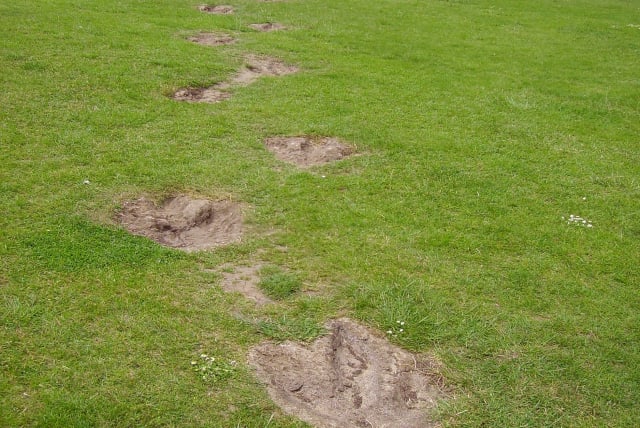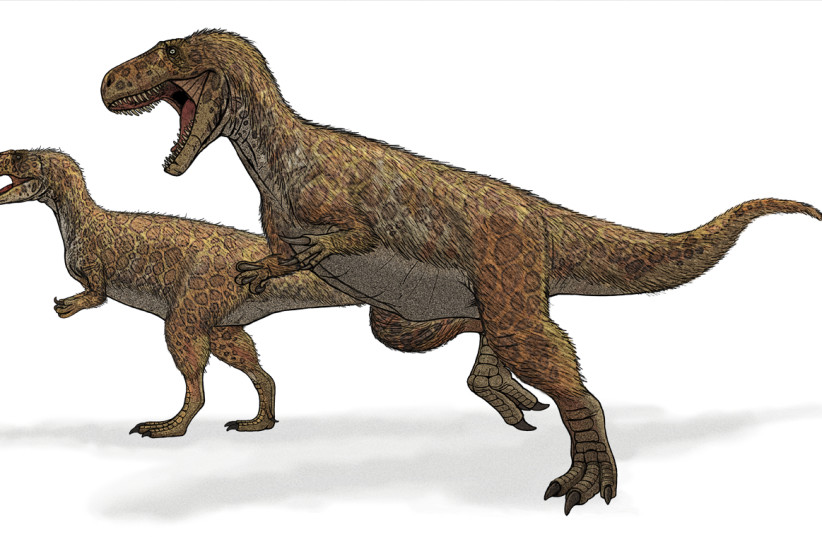Record-breaking dinosaur footprint appears on the coast of England - study

Measuring nearly one meter long, the footprint is the largest of its kind found in the English county of Yorkshire.
An enormous dinosaur footprint was found in Yorkshire, England in 2021 - the largest of its kind found in the county and only the sixth of its kind ever found in the Cleveland Basin - according to a new study.
The footprint was analyzed in the peer-reviewed study, which was published on Thursday in the journal Proceedings of the Yorkshire Geological Society.
Paleontologists were eager to investigate the discovery. Dr. Dean Lomax, a paleontologist at the University of Manchester, said the “wonderful” discovery provided new insights into the carnivorous megafauna which once roamed the region's coast, according to a report from the BBC.
Measuring nearly one meter long, the footprint is the largest of its kind found in the county of Yorkshire, according to a CNN report.
The study points out that, aside from being the largest footprint of its kind found in the area, the print is also only the sixth specimen of its kind recorded from the Cleveland Basin. This is to say, well-preserved theropod tracks are quite rare. Theropods are characterized by having hollow bones and three toes on each limb.
How might this creature have lived?
“The most intriguing feature of our footprint is a long portion preserved at the back of the foot, which is an impression of what we call the metapodium,” said Lomax.
“The presence of this might suggest our large meat-eater was squatting down in the mud, before standing up and walking away,” he added. “It's fun to think this dinosaur might well have been strolling along a muddy coastal plain one lazy Sunday afternoon in the Jurassic.”
According to the study, data from the print tells paleontologists that the feet were likely covered in skin (as opposed to feathers or scales) and had phalangeal pads or nodes across the length of the digits.
Scientists determined that the maker of the footprint was very large (megalosaurid theropod) and sat at or near the top of the food chain, which explains why there are very few fossilized footprints to attest to their presence on earth.
"Now that the specimen has been studied, plans are in motion for it to go on public display, to spark the imagination of the next generation of fossil hunters," Lomax said.
“This important discovery adds further evidence that meat-eating giants once roamed this area during the Jurassic,” added geologist and lead author John Hudson. “The type of footprint, combined with its age, suggests that it was made by a ferocious Megalosaurus-like dinosaur, with a possible hip height between 2.5 and 3 meters (between 8.2 and 9.8 feet).”
Hudson added that Megalosaurus was the world's first official dinosaur; its bones were discovered in Oxfordshire in 1824. Megalosaurus was one of the largest predators of its time, with some measuring 8 or 9 meters (26.2 or 29.5 feet) long, CNN noted.
Jerusalem Post Store
`; document.getElementById("linkPremium").innerHTML = cont; var divWithLink = document.getElementById("premium-link"); if (divWithLink !== null && divWithLink !== 'undefined') { divWithLink.style.border = "solid 1px #cb0f3e"; divWithLink.style.textAlign = "center"; divWithLink.style.marginBottom = "15px"; divWithLink.style.marginTop = "15px"; divWithLink.style.width = "100%"; divWithLink.style.backgroundColor = "#122952"; divWithLink.style.color = "#ffffff"; divWithLink.style.lineHeight = "1.5"; } } (function (v, i) { });

